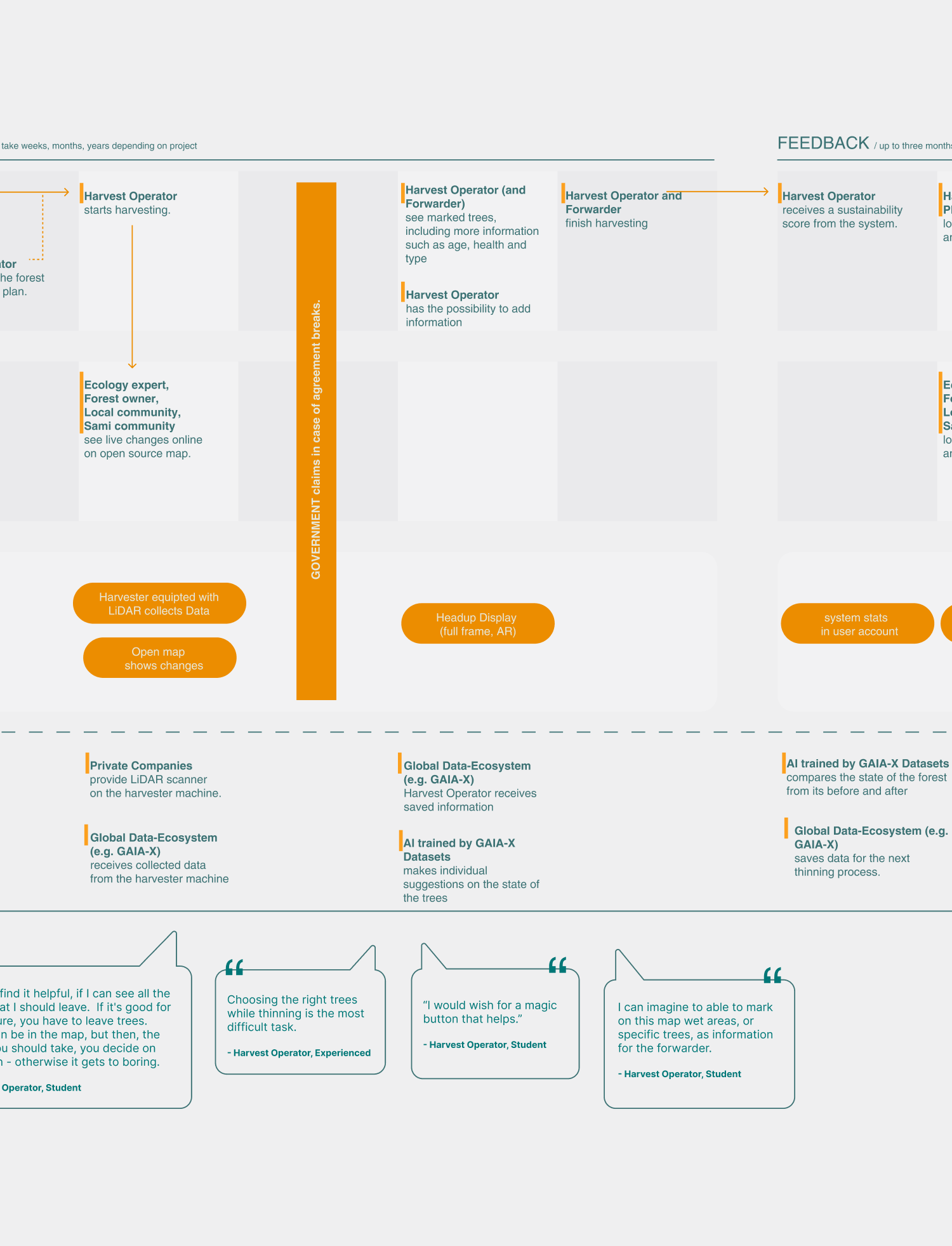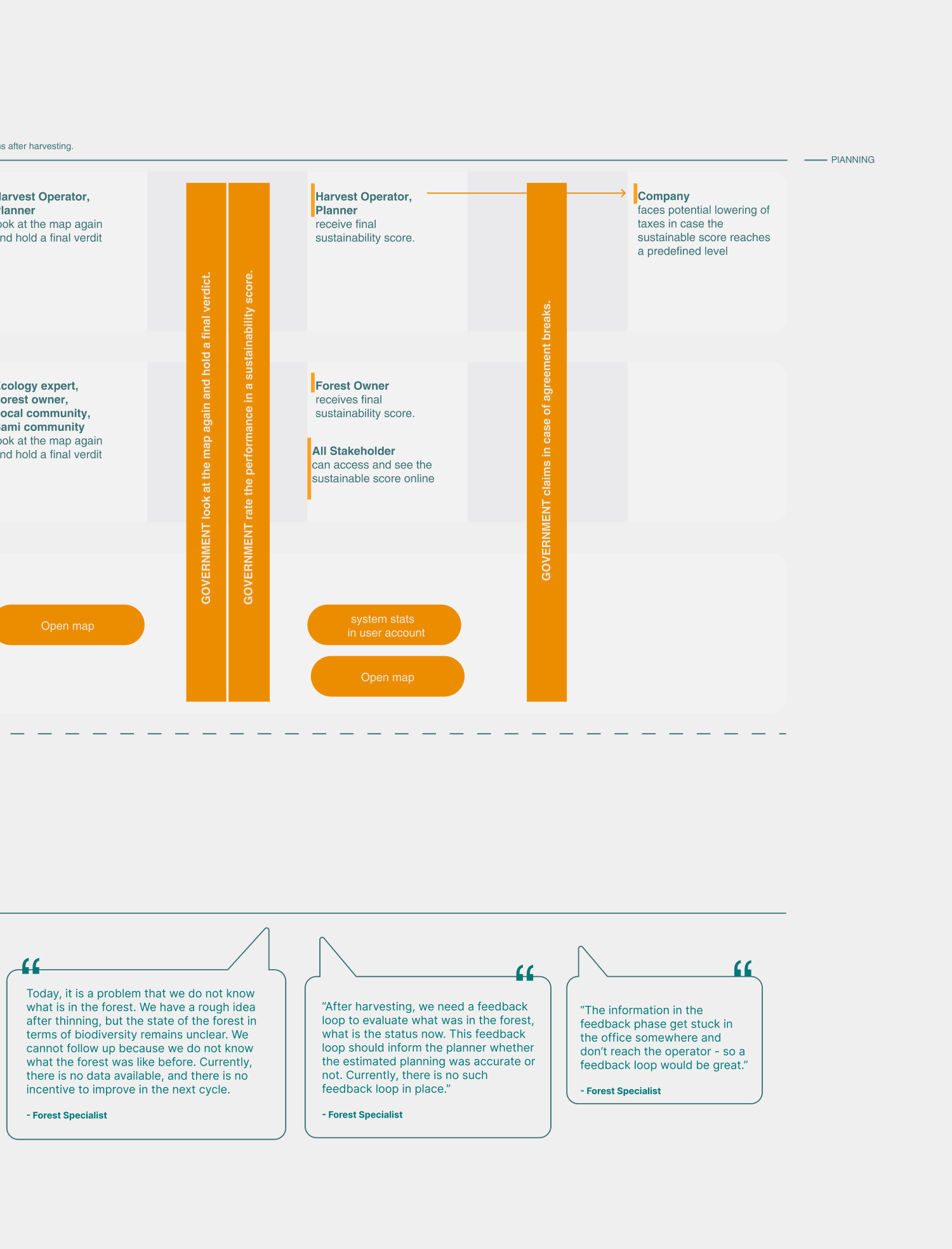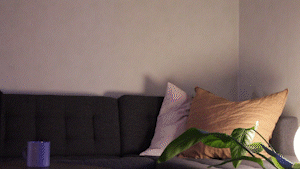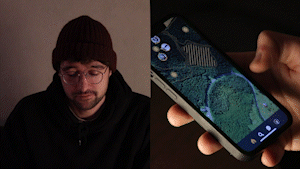Open Forest
an inclusive approach to sustainable forestry
Open Forest
1st semester project M.A. 2022
10 weeks
Team work* (Marie Spreitzer, Regina Gensinger)
Collaboration with Skogstekniska Klustret
*The research and concept developing were worked on equally by each individual. For the end presentation, I worked on one of the mock-ups concerning the harvester machine, as well as created some videos showing the harvester machine’s AR interface.
How can the operator be supported in making better and more sustainable decisions while harvesting without being overloaded with information?
As Swedish forestry moves towards “zero impact” forestry, there is a growing need to support operators in making appropriate and sustainable decisions. The development of new decision support systems is increasing the information load for operators, leading to a demand for a system that is less overwhelming.
Open Forest is an open, decentralized network that enables comments, decisions, and actions to be stored in a transparent and long-lasting way. This data will fuel the next circle of harvesting and enable different actors to work together toward a sustainable future for Swedish forests.
Our research indicates that there is a lack of feedback loops during the harvesting process and the exclusion of multiple stakeholders from that process. To address these issues, we propose a design that transforms the currently linear phases of planning, doing, and feedback into a continuous, circular workflow.
Information must be gathered, shared, and flow so that each harvesting cycle can learn from the previous one. This allows for more complex and sustainable forest management styles and forest work to become feasible.
We worked together with various partners, experts and students.
To investigate this area further, we conducted ethnographic research on four harvest operators and ten operator students. We worked together in co-design sessions with various partners, including forestry experts and machine manufacturers.
Multi-level perspective of the design process: Seeing the work in the forest as part of a system
To enable forest workers to work more sustainably, it is necessary to equip them with the appropriate tools. However, the entire system must become more sustainable so that it provides the tools with the right information.
Design opportunities in a summery:
If we want the harvester to make more sustainable decisions, the system itself must become more sustainable. We identified the following leverage points in the system, where changes might be radical but have a great impact:
Feedback loops: introducing feedback loops into the system
Purpose: maximum profit (tracking the harvester) → maximum forest well-being (tracking the forest, reward sustainable behaviour)
Power: power to the planet and the people and not only the profit-oriented industry
Relationships: working together in a decentralised way, with an external entity with the power to decide, instead of the hierarchical system that is in place right now
User flow
Receiving an invitation
The stakeholders involved receive an invitation to look at a new harvesting project.
Adding comments
Now they have the chance to add comments and state their interests.
Increased planning
An increased planning provides the potential to reduce the cognitive load while harvesting.
The planning person reads the comments while walking through the forest and prepares a cutting plan. They use a tablet to mark different trees through an augmented reality feature so that the harvest operator knows which trees they should leave or which areas they should not drive over.
Support sustainable decisions
While the harvester operator is driving, they can see the information provided by the planner through the windshield.
This supports them in sustainable decision-making.
The system updates the map in real time
Regular updates give the stakeholders a chance to see what is being cut. They can provide feedback on how happy they are with the cutting, which helps the company improve its collaborative practice.
Open Forest: A socio-technical system design that wants to transform forest management
Various stakeholders can join Open Forest on their phones. They can comment on the map in the planning phase but also give feedback.
Introducing a collaborative and decentralized network: The open forest.
To ensure continuous data flow and transparency through the procedure, we designed a system that gathers quantitative and qualitative data from a network of stakeholders on a collaborative, decentralized map.
How can technology support the forests of tomorrow?
The planner uses a tablet to create a more accurate cutting plan and takes other stakeholders’ interests into consideration.
“Today, it is a problem that we do not know what is in the forest. We have a rough idea after thinning, but the state of the forest in terms of biodiversity remains unclear. We cannot follow up because we do not know what the forest was like before. Currently, there is no data available, and there is no incentive to improve in the next cycle.”
— Björn
Establishing long-lasting feedback mechanisms
The stakeholders can give feedback on the harvesting process via Open Forest.
The harvester operator sees the information as an augmented reality vision inside their windshield.
Collecting qualitative and quantitative data
Companies use LIDAR technology (three-dimensional laser scanning) to scan forests while harvesting
Collaborating with organisations that specialise in scanning forests (mostly from top-view) e.g. The climate Mapper Tool, CO2 revolution, Open Forest Protocol
Expert and citizen contributions - including the possibility to leave comments and marking areas of interest.
The planet and the people as official stakeholder
To prioritize the well-being of the forest, we propose introducing an external publicly-funded panel of experts and representatives that moderates actions and interests.
The forest as a stakeholder
Experts will have a prioritized status to ensure that the forest's needs are met. By monitoring changes and making them publicly available, we aim to give the forest a voice in its own welfare. The panel will also assess the expected impacts of various climate actions on the forest.
The people
The voice of the people, specifically communities and citizens, plays an important role in achieving social sustainability. To enable this, we added a layer that allows users to write comments, mark cultural heritage sites, note their interests, or record observations in the system. Our application also features various user interfaces so that non-specialist citizens can use it to monitor changes and the health of the forest, and participate in decision-making.
Incentives for the forest owners and companies
Forest owners should align their actions with the Open Forest community. Financial initiatives and a publicly visible eco-score can motivate companies to align their interests with the people and the forest. In conflict situations, the panel will make the decisions.

Service Blueprint



“Let’s track the forest, not the operator”
— Johannes
GAIA X: Being part of the next generation of data infrastructure from which everyone benefits
The next generation of data infrastructure is crucial: an open, transparent, and secure digital ecosystem where data and services can be made available, collected and shared in an environment of trust. This approach has been introduced on a European level, as seen with Gaia-X, in which Open Forest wants to participate.
(https://www.data-infrastructure.eu/GAIAX/Navigation/EN/Home/home.html)
The Power of AI: Supporting and Forecasting Forest Work
The database facilitates an information flow that not only visualizes the current state but also generates actionable steps for both people and the industry. Open Forest is a system that supports operators in the socio-ecological sustainable decision-making process while harvesting.
Open data platforms and AI-generated recommendations are highly relevant future streams that need to be taken into account when we want to design sustainable transitions.
Embedded in the next generation of the internet that is decentralized, equitable, and non-hierarchical: Web-3.
Information is stored in a shared ledger (blockchain), that allows digital information to be recorded and distributed, but not edited - ensuring transparency and accountability.
“Suggestions could be great, because then you could get the maximum out of every tree.”
— Amanda
Key Takeaway
This was the first time I worked with a systemic design. I realized that as a designer, it is important to consider all levels of design, from the product level to societal systems, in order to create more sustainable solutions.
The biggest challenge was tackling the inclusiveness factor and thus making everyone’s voice, including nature’s seen and heard. I believe there is still room for that to improve. If we had more time for this project, this topic is definitely one that I would love to dive deeper into.
The topic of inclusiveness also made me reflect on power dynamics and hierarchies in the design field. Who defines what inclusiveness is, and who can be part of that? How can I, being in the role of an aspiring designer, decenter my authority? I am still in the process of exploring these questions.










